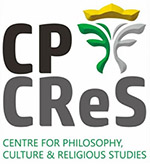Menilik Memetika sebagai Koleksi Baru Teori Kebudayaan
DOI:
https://doi.org/10.26593/mel.v37i2.6297Keywords:
evolution, culture, memetic, mimesis, meme, imitation, human mindAbstract
Evolution process not only occurs in the biological area, but also in the cultural area. On the one hand, from one of the evolution theories, it has been known that the unit of replication is gene. On the other hand, the unit of transmission and replication in the cultural evolution can be associated with meme. Similar to genes that propagate themselves through a process called reproduction, memes also propagate themselves from person to person through a process called imitation. By way of imitation, memetic theory explains the development and the evolution of a culture. Imitating others points to the phenomena where ideas, information, behaviour, things, or style are passed on or spread/repeated by certain people. The process in which cultural elements (memes) are passed onto other groups can be considered as a sort of cultural transmission. Memes propagate for themselves and in this way they survive and exist in the human culture. Human mind has the ability for imitating information and ideas, therefore a human being is seen as an agent of meme evolution. Memes are spread out through human interactions and the various kinds of media. In this sense, culture will always be in the state of developing and changing.
Downloads
Published
Issue
Section
License
Copyright (c) 2022 Olivia Cindy Monica

This work is licensed under a Creative Commons Attribution-NonCommercial 4.0 International License.
MELINTAS applies the Creative Commons Attribution (CC BY NC) license to articles and other works we publish. If you submit your paper for publication by MELINTAS, you agree to have the CC BY NC license applied to your work.


